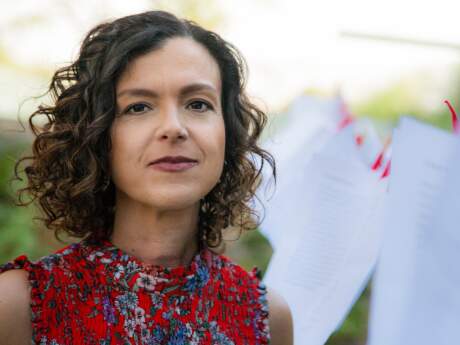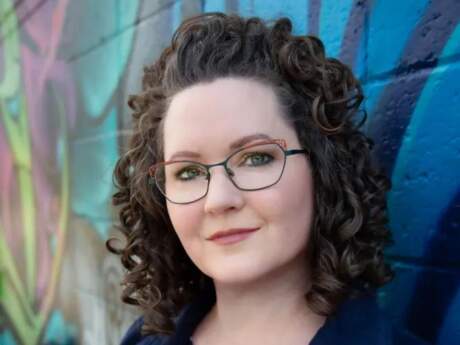In Their Own Words
April Naoko Heck's “Funeral Outfit”

Funeral Outfit
Did I try on the white blouse, did I pay
with cash, did I drive to the store, did my little
sister come, did I tell the cashier
what it was for, did I wear it again, did it stain, did it match,
did I wash it first, did it fit, was it
pretty, was it from the girls' department or women's,
were the buttons milk or pearls, did I think
anyone ever would kiss me, did I look at my father's
face, did I cue the song, had he warned me,
did it match his silk pillow, did it itch,
was it lace, was it proper, did I sit
next to his mother, was there coffee after, were there lilies,
were there windows overlooking a parking lot,
grass mowed down by the neighbor boy?
From A Nuclear Family (UpSet Press, 2014). Reprinted with the permission of the author.
On "Funeral Outfit"
Aside from this poem having the most boring title ever, I've grown increasingly fond of this quiet, formally simple poem after sharing it aloud at recent poetry readings.
This poem emerged from an assignment Natalie Diaz gave in a brilliant workshop she led last year at Cave Canem Foundation. Her workshop focused on image, asking us to put pressure on image choices and to insist that each word mean something particular, essential, deeply personal. So if, say, the sky or ocean was a recurring image, she asked us to research it (actually Google, study, and take notes on it), free write on it, explode the image the way sunlight through a magnifying glass might enflame a blade of grass. I was reminded of how an image can be a crutch, a stand-in for an as-yet undeveloped thought.
In 1990, the college winter my father died suddenly, I bought the white blouse from a Sears store in Mentor, Ohio. The blouse had long sleeves, a ruffled Peter Pan collar, and puffed shoulders. When a family member dies, the survivors should be able to sleep for 30 days and wake up after the terrible decisions have been made. The type of coffin (pine is cheapest), the music, the psalms, the suit and tie for the body. I'd had to leave school quickly while my father lay ill in the hospital, a few days before the funeral. I'd thrown a few things into a suitcase and refused to pack a dress, though intuition whispered that I would need it.
When I wrote the first draft, which is close to the final, I was most excited when this question appeared on the page: "was it from the girl's department or women's?" It's a genuine question. I was 18, a late bloomer, never had had a boyfriend. Physically and emotionally I was part girl, part woman.
I could say that the girl was buried with my father, but that isn't true. I'm still that girl-woman when I read this poem. The blurriness of those wind-chilled days never sharpens into focus. The questions never have answers—a fact which keeps the poem alive for me, and which also reveals its artifice. The poem pretends that the speaker is having an internal monologue and that the reader is an eavesdropper. The poem pretends to be concerned with specific questions when really it's asking one big question: what do the living do in death? The most prosaic actions become heroic.
I think the dress was navy blue.


